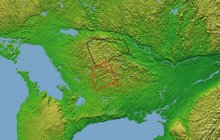http://www.newyorker.com/reporting/2008/07/07/080707fa_fact_kolbert
The Island in the Wind
A Danish community’s victory over carbon emissions.
by Elizabeth Kolbert July 7, 2008
Once people on Samsø started thinking about energy, a local farmer explains, “it became a kind of sport.”
Photograph by Joachim Ladefoged.
Jørgen Tranberg is a farmer who lives on the Danish island of Samsø. He is a beefy man with a mop of brown hair and an unpredictable sense of humor. When I arrived at his house, one gray morning this spring, he was sitting in his kitchen, smoking a cigarette and watching grainy images on a black-and-white TV. The images turned out to be closed-circuit shots from his barn. One of his cows, he told me, was about to give birth, and he was keeping an eye on her. We talked for a few minutes, and then, laughing, he asked me if I wanted to climb his wind turbine. I was pretty sure I didn’t, but I said yes anyway.
We got into Tranberg’s car and bounced along a rutted dirt road. The turbine loomed up in front of us. When we reached it, Tranberg stubbed out his cigarette and opened a small door in the base of the tower. Inside were eight ladders, each about twenty feet tall, attached one above the other. We started up, and were soon huffing. Above the last ladder, there was a trapdoor, which led to a sort of engine room. We scrambled into it, at which point we were standing on top of the generator. Tranberg pressed a button, and the roof slid open to reveal the gray sky and a patchwork of green and brown fields stretching toward the sea. He pressed another button. The rotors, which he had switched off during our climb, started to turn, at first sluggishly and then much more rapidly. It felt as if we were about to take off. I’d like to say the feeling was exhilarating; in fact, I found it sickening. Tranberg looked at me and started to laugh.
Samsø, which is roughly the size of Nantucket, sits in what’s known as the Kattegat, an arm of the North Sea. The island is bulgy in the south and narrows to a bladelike point in the north, so that on a map it looks a bit like a woman’s torso and a bit like a meat cleaver. It has twenty-two villages that hug the narrow streets; out back are fields where farmers grow potatoes and wheat and strawberries. Thanks to Denmark’s peculiar geography, Samsø is smack in the center of the country and, at the same time, in the middle of nowhere.
For the past decade or so, Samsø has been the site of an unlikely social movement. When it began, in the late nineteen-nineties, the island’s forty-three hundred inhabitants had what might be described as a conventional attitude toward energy: as long as it continued to arrive, they weren’t much interested in it. Most Samsingers heated their houses with oil, which was brought in on tankers. They used electricity imported from the mainland via cable, much of which was generated by burning coal. As a result, each Samsinger put into the atmosphere, on average, nearly eleven tons of carbon dioxide annually.
Then, quite deliberately, the residents of the island set about changing this. They formed energy coöperatives and organized seminars on wind power. They removed their furnaces and replaced them with heat pumps. By 2001, fossil-fuel use on Samsø had been cut in half. By 2003, instead of importing electricity, the island was exporting it, and by 2005 it was producing from renewable sources more energy than it was using.
The residents of Samsø that I spoke to were clearly proud of their accomplishment. All the same, they insisted on their ordinariness. They were, they noted, not wealthy, nor were they especially well educated or idealistic. They weren’t even terribly adventuresome. “We are a conservative farming community” is how one Samsinger put it. “We are only normal people,” Tranberg told me. “We are not some special people.”
